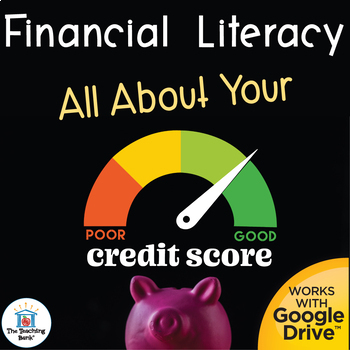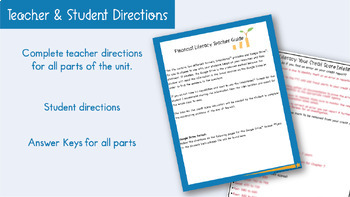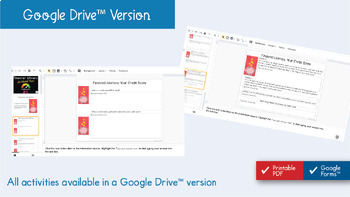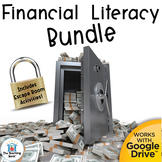Financial Literacy All About Your Credit Score
- PDF
- Google Apps™
- Internet Activities
- Webquests

What educators are saying
Also included in
- Students will learn all about checking and savings accounts, credit and debit cards, the importance of your credit score, and jobs and taxes for teens in this discounted financial literacy bundle that includes culminating Escape Room activities that can be done digitally, and a practical tax filing,Price $36.80Original Price $46.00Save $9.20
Description
Students will learn all about credit scores and credit reports in this financial literacy unit including a culminating activity to help students understand how things like a missed payment can lower their credit score and cost them more money due to higher interest rates in the long run. This download contains both a printable, as well as a Google Drive™, format.
Students will work through a WebQuest using the printable IntelliNotes™ format or the digital version in Google Drive. The unit ends with the student completing a practical activity exploring how responsible or irresponsible financial actions can affect their credit scores and cost them money in higher interest rates and insurance rates.
Topics Covered:
- Understanding what the FICO score is
- Understanding the credit report and how to correct errors
- Understanding how the FICO is calculated
- Understanding how to build good credit
- Understanding how to maintain good credit
- Understanding how to improve the credit score
- Understand how your credit score can affect your life.
This unit contains:
- Detailed teacher guides for the printable and digital activities
- Printable IntelliNotes™ student pages
- Google Slides format for student instructional pages and webquest links
- Answer keys
→Please view the free preview to see sample pages of all parts of this unit
Please email with any questions you may have!
Learn about new resources and discounts
• Follow my store to get email notifications about new resources added.
• Subscribe to my newsletter to learn about new resources, discount codes, and updates.
Do you have any questions?
Please visit The Teaching Bank's FAQ or reach out to TpT support or email me directly.
© Google Inc. All rights reserved. Google and the Google Logo are registered trademarks of Google Inc. The Teaching Bank® is an independent company and is not affiliated with or endorsed by Google Inc.






